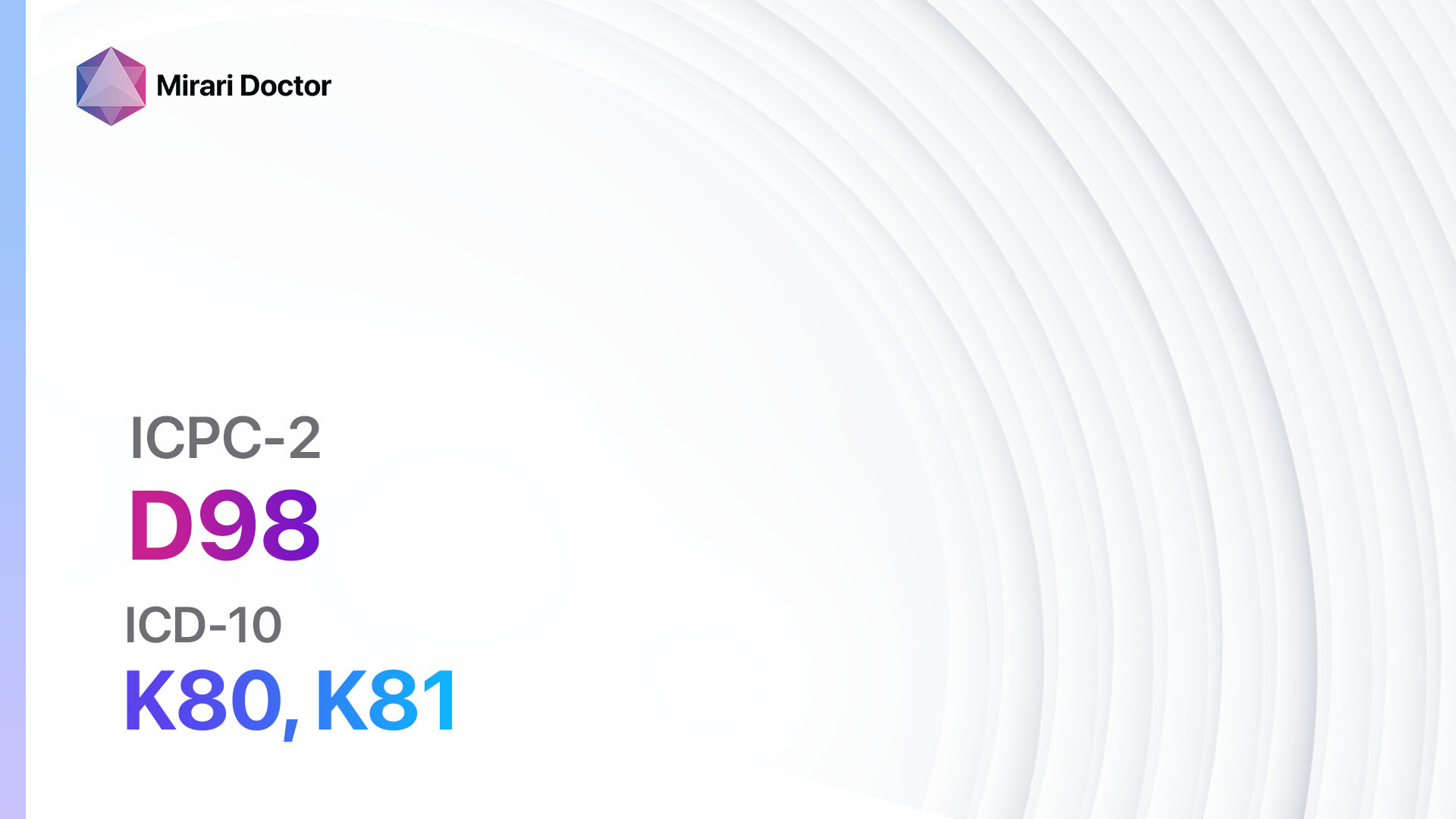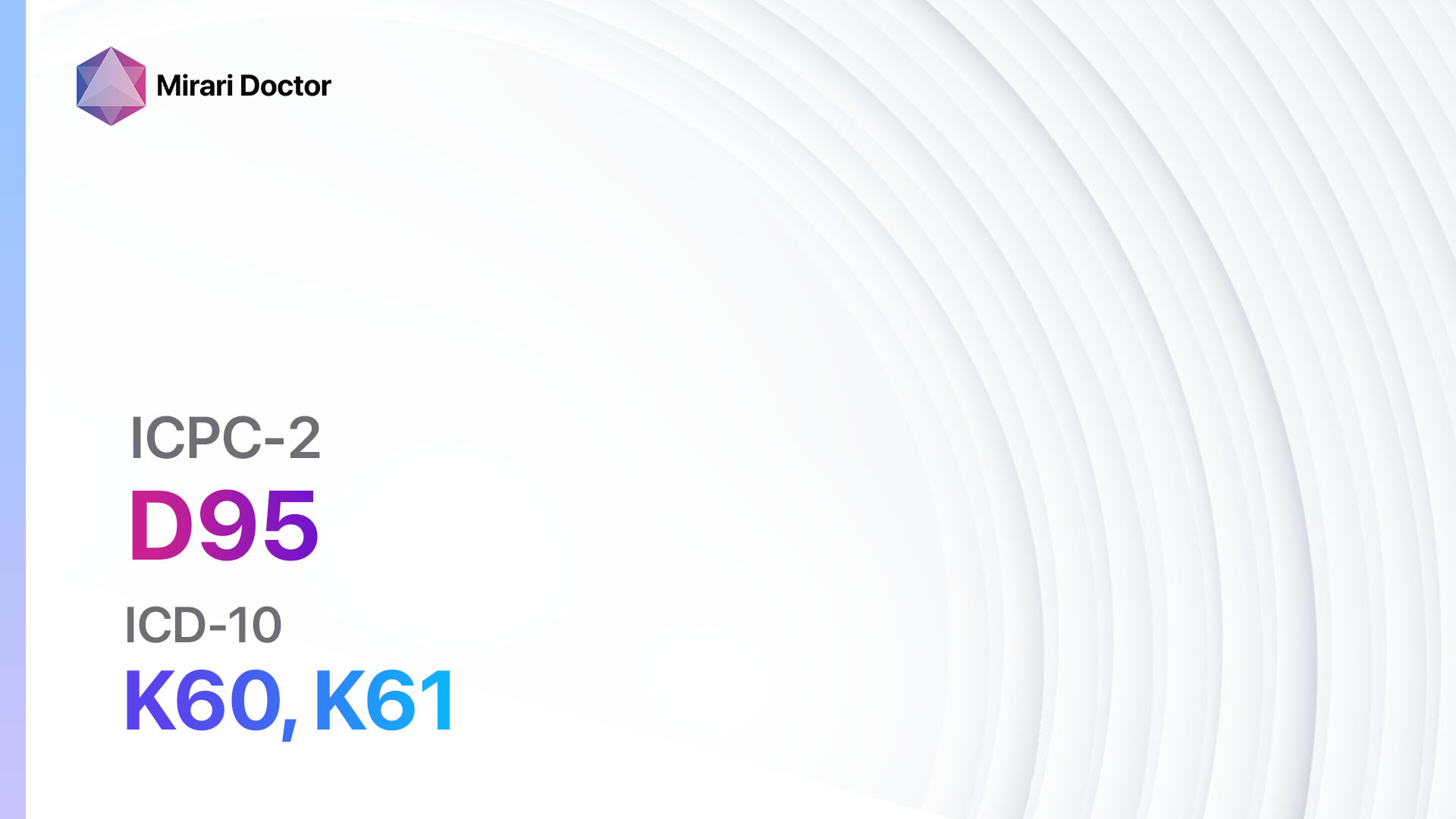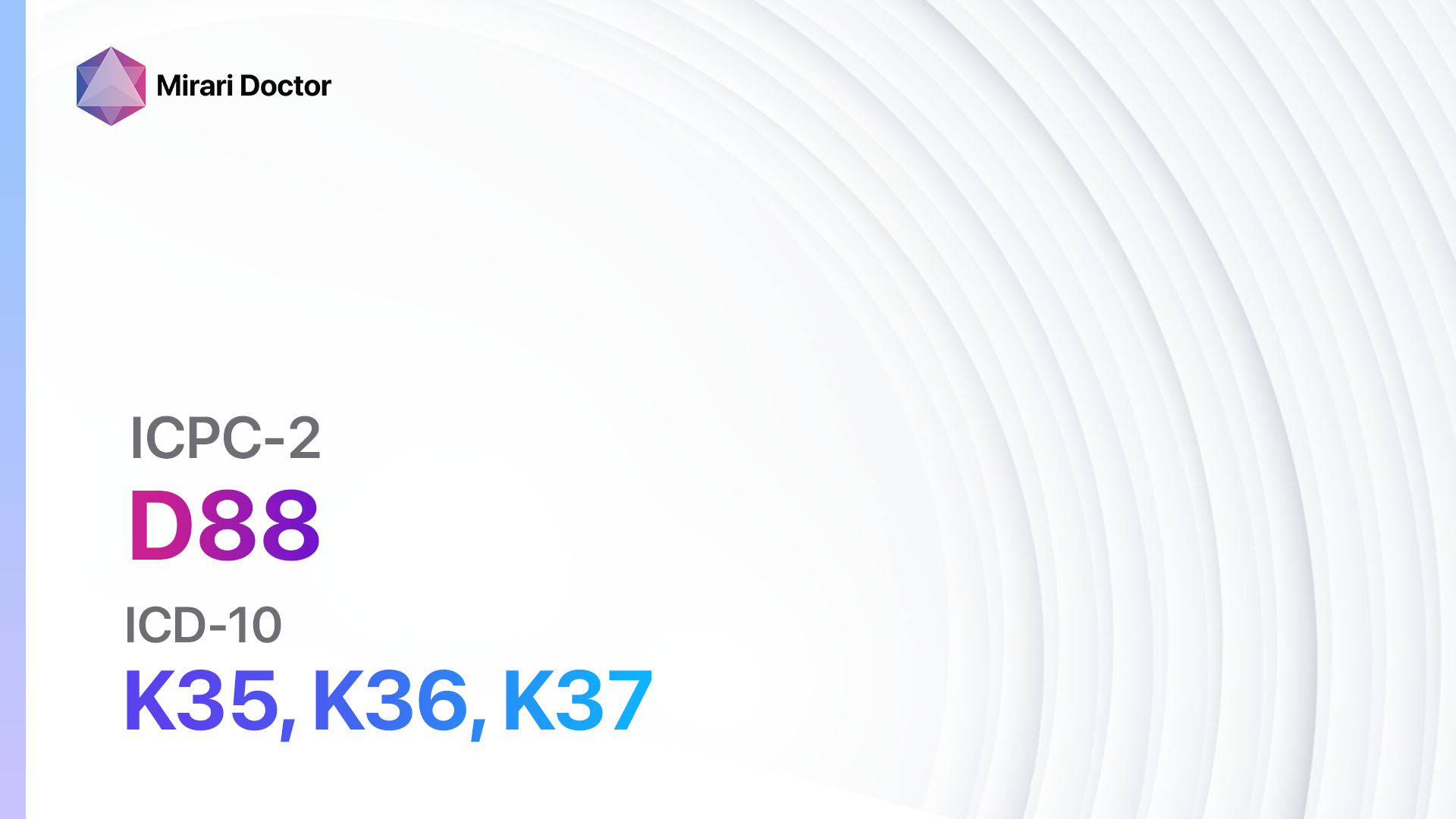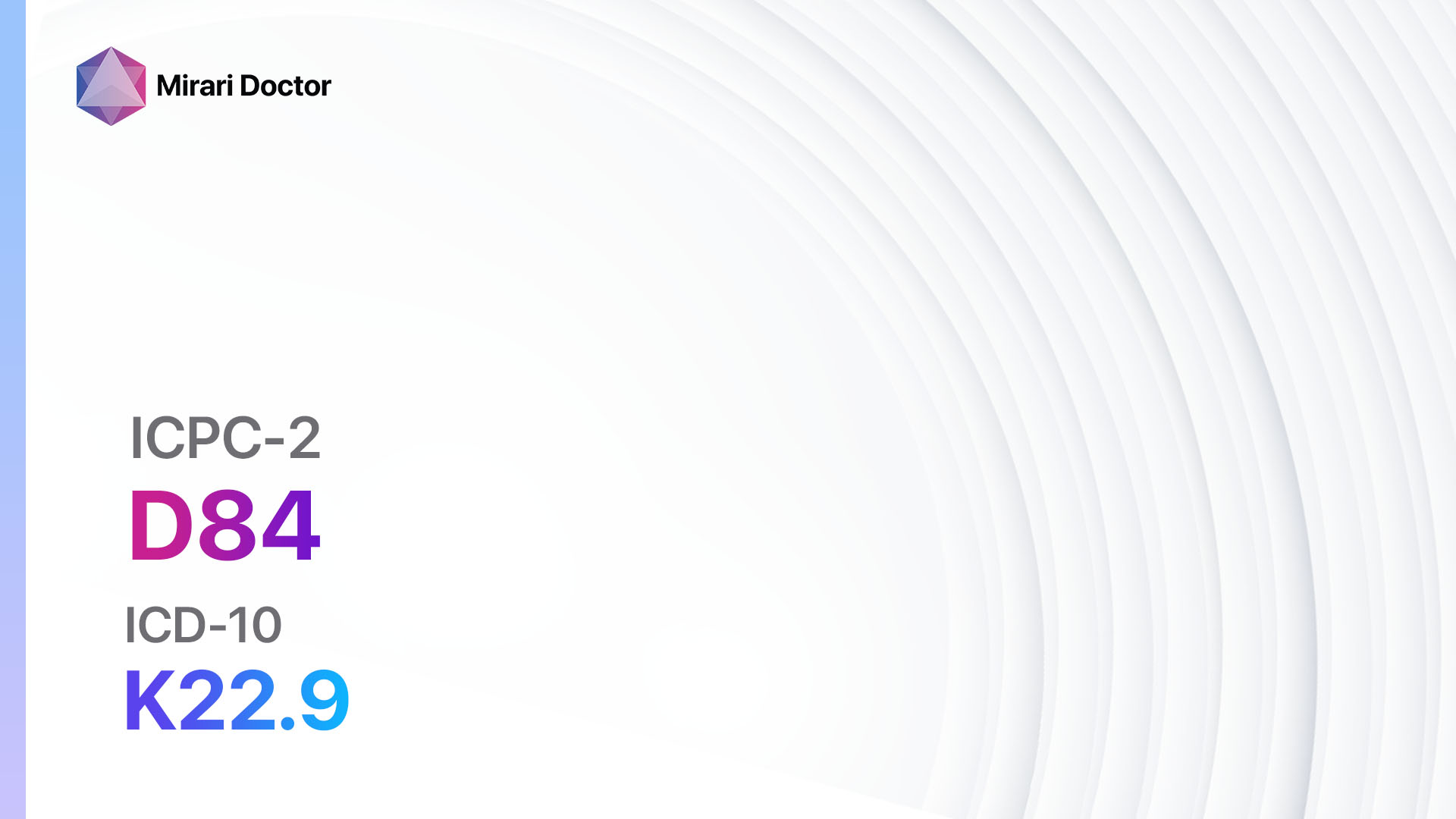
Introduction
Malignant neoplasm of the pancreas, also known as pancreatic cancer, is a serious and often fatal disease. It is characterized by the abnormal growth of cells in the pancreas, which can spread to other parts of the body. The aim of this guide is to provide a comprehensive overview of the diagnosis and possible interventions for pancreatic cancer. [1][2]
Codes
Symptoms
- Abdominal pain: Persistent pain in the upper abdomen or back. [4]
- Jaundice: Yellowing of the skin and eyes. [5]
- Weight loss: Unexplained and significant weight loss. [6]
- Loss of appetite: Decreased desire to eat. [7]
- Nausea and vomiting: Feeling sick and vomiting. [8]
- Fatigue: Feeling tired and weak. [9]
Causes
- Age: The risk of developing pancreatic cancer increases with age. [10]
- Smoking: Cigarette smoking is a major risk factor for pancreatic cancer.
- Obesity: Being overweight or obese increases the risk of pancreatic cancer.
- Family history: Having a close relative with pancreatic cancer increases the risk.
- Diabetes: People with diabetes have a higher risk of developing pancreatic cancer.
Diagnostic Steps
Medical History
- Gather information about the patient’s risk factors, such as smoking history, family history of pancreatic cancer, and any previous diagnosis of diabetes.
- Ask about the presence of symptoms, such as abdominal pain, jaundice, weight loss, and loss of appetite.
- Inquire about any other medical conditions or medications that may be relevant to the diagnosis.
Physical Examination
- Perform a thorough physical examination, paying attention to signs such as jaundice, abdominal tenderness, and palpable masses.
- Check for any other signs of metastasis, such as enlarged lymph nodes or liver enlargement.
Laboratory Tests
- Blood tests: Measure levels of certain substances in the blood, such as liver enzymes, bilirubin, and tumor markers (CA 19-9).
- Urine tests: Check for the presence of bilirubin or other abnormal substances.
- Stool tests: Look for signs of pancreatic enzymes in the stool.
Diagnostic Imaging
- Ultrasound: Uses sound waves to create images of the pancreas and surrounding organs.
- CT scan: Provides detailed cross-sectional images of the pancreas and nearby structures.
- MRI: Uses magnetic fields and radio waves to produce detailed images of the pancreas.
- Endoscopic ultrasound: Combines endoscopy and ultrasound to visualize the pancreas and obtain tissue samples.
Other Tests
- Endoscopic retrograde cholangiopancreatography (ERCP): A procedure that combines endoscopy and X-rays to examine the pancreatic and bile ducts.
- Biopsy: Removal of a small sample of tissue for examination under a microscope to confirm the diagnosis.
- Laparoscopy: A minimally invasive surgical procedure to examine the abdomen and obtain tissue samples.
Follow-up and Patient Education
- Provide the patient with information about the diagnosis, treatment options, and prognosis.
- Schedule regular follow-up appointments to monitor the patient’s condition and response to treatment.
- Offer support and resources for coping with the emotional and physical challenges of pancreatic cancer.
Possible Interventions
Traditional Interventions
Medications:
Top 5 drugs for Malignant neoplasm pancreas:
- Gemcitabine:
- Cost: $2,000-$3,000 per month.
- Contraindications: Hypersensitivity to gemcitabine.
- Side effects: Nausea, vomiting, fatigue.
- Severe side effects: Bone marrow suppression, liver toxicity.
- Drug interactions: None reported.
- Warning: Regular blood tests required to monitor blood cell counts.
- FOLFIRINOX (combination of folinic acid, fluorouracil, irinotecan, and oxaliplatin):
- Cost: $5,000-$7,000 per month.
- Contraindications: Severe bone marrow suppression, severe diarrhea.
- Side effects: Nausea, vomiting, diarrhea.
- Severe side effects: Neutropenia, peripheral neuropathy.
- Drug interactions: None reported.
- Warning: Requires close monitoring of blood cell counts and liver function.
- Nab-paclitaxel:
- Cost: $4,000-$6,000 per month.
- Contraindications: Hypersensitivity to paclitaxel.
- Side effects: Fatigue, peripheral neuropathy.
- Severe side effects: Bone marrow suppression, severe allergic reactions.
- Drug interactions: None reported.
- Warning: Regular blood tests required to monitor blood cell counts.
- Erlotinib:
- Cost: $3,000-$4,000 per month.
- Contraindications: Hypersensitivity to erlotinib.
- Side effects: Rash, diarrhea, fatigue.
- Severe side effects: Interstitial lung disease, liver toxicity.
- Drug interactions: CYP3A4 inhibitors and inducers.
- Warning: Regular liver function tests required.
- Capecitabine:
- Cost: $2,000-$3,000 per month.
- Contraindications: Severe renal impairment, known dihydropyrimidine dehydrogenase deficiency.
- Side effects: Hand-foot syndrome, diarrhea, nausea.
- Severe side effects: Bone marrow suppression, severe allergic reactions.
- Drug interactions: Warfarin, phenytoin.
- Warning: Regular blood tests required to monitor blood cell counts.
Alternative Drugs:
- 5-fluorouracil (5-FU): An older chemotherapy drug that may be used in combination with other agents.
- Cisplatin: A platinum-based chemotherapy drug that may be used in combination with other agents.
- Pancreatic enzyme supplements: Help improve digestion and nutrient absorption in patients with pancreatic cancer.
- Pain medications: Provide relief from cancer-related pain, such as opioids (e.g., morphine) or nonsteroidal anti-inflammatory drugs (NSAIDs).
Surgical Procedures:
- Whipple procedure: Surgical removal of the head of the pancreas, part of the small intestine, gallbladder, and bile ducts. Cost: $50,000-$100,000.
- Distal pancreatectomy: Surgical removal of the body and tail of the pancreas. Cost: $30,000-$70,000.
- Total pancreatectomy: Surgical removal of the entire pancreas. Cost: $70,000-$150,000.
- Palliative surgery: Procedures to relieve symptoms and improve quality of life, such as bypassing blocked bile ducts or inserting stents. Cost: $10,000-$30,000.
Alternative Interventions
- Acupuncture: May help relieve pain and improve overall well-being. Cost: $60-$120 per session.
- Massage therapy: Can provide relaxation and pain relief. Cost: $50-$100 per session.
- Mind-body techniques (e.g., meditation, yoga): May help reduce stress and improve quality of life. Cost: Varies depending on the specific program or class.
- Herbal supplements: Some herbs, such as turmeric and milk thistle, may have potential benefits for cancer patients. Cost: Varies depending on the specific supplement.
- Nutritional therapy: Working with a registered dietitian to develop a personalized nutrition plan. Cost: $100-$200 per session.
Lifestyle Interventions
- Healthy diet: Emphasize a diet rich in fruits, vegetables, whole grains, and lean proteins. Cost: Varies depending on food choices.
- Regular exercise: Engage in moderate-intensity aerobic activity for at least 150 minutes per week. Cost: Varies depending on the chosen activity.
- Smoking cessation: Quitting smoking can improve treatment outcomes and overall health. Cost: Varies depending on the chosen smoking cessation program or aids.
- Stress management: Engage in stress-reducing activities, such as yoga, meditation, or counseling. Cost: Varies depending on the chosen activity or therapy.
- Support groups: Joining a support group can provide emotional support and practical advice. Cost: Varies depending on the specific group or organization.
It is important to note that the cost ranges provided are approximate and may vary depending on the location and availability of the interventions.
Mirari Cold Plasma Alternative Intervention
Understanding Mirari Cold Plasma
- Safe and Non-Invasive Treatment: Mirari Cold Plasma is a safe and non-invasive treatment option for various skin conditions. It does not require incisions, minimizing the risk of scarring, bleeding, or tissue damage.
- Efficient Extraction of Foreign Bodies: Mirari Cold Plasma facilitates the removal of foreign bodies from the skin by degrading and dissociating organic matter, allowing easier access and extraction.
- Pain Reduction and Comfort: Mirari Cold Plasma has a local analgesic effect, providing pain relief during the treatment, making it more comfortable for the patient.
- Reduced Risk of Infection: Mirari Cold Plasma has antimicrobial properties, effectively killing bacteria and reducing the risk of infection.
- Accelerated Healing and Minimal Scarring: Mirari Cold Plasma stimulates wound healing and tissue regeneration, reducing healing time and minimizing the formation of scars.
Mirari Cold Plasma Prescription
Video instructions for using Mirari Cold Plasma Device – D76 Malignant neoplasm pancreas (ICD-10:C25)
| Mild | Moderate | Severe |
| Mode setting: 1 (Infection) Location: 4 (Heart, Bile & Pancreas) Morning: 15 minutes, Evening: 15 minutes |
Mode setting: 1 (Infection) Location: 4 (Heart, Bile & Pancreas) Morning: 30 minutes, Lunch: 30 minutes, Evening: 30 minutes |
Mode setting: 1 (Infection) Location: 4 (Heart, Bile & Pancreas) Morning: 30 minutes, Lunch: 30 minutes, Evening: 30 minutes |
| Mode setting: 2 (Wound Healing) Location: 4 (Heart, Bile & Pancreas) Morning: 15 minutes, Evening: 15 minutes |
Mode setting: 2 (Wound Healing) Location: 4 (Heart, Bile & Pancreas) Morning: 30 minutes, Lunch: 30 minutes, Evening: 30 minutes |
Mode setting: 2 (Wound Healing) Location: 4 (Heart, Bile & Pancreas) Morning: 30 minutes, Lunch: 30 minutes, Evening: 30 minutes |
| Mode setting: 3 (Antiviral Therapy) Location: 3 (Kidney, Liver & Spleen) Morning: 15 minutes, Evening: 15 minutes |
Mode setting: 3 (Antiviral Therapy) Location: 3 (Kidney, Liver & Spleen) Morning: 30 minutes, Lunch: 30 minutes, Evening: 30 minutes |
Mode setting: 3 (Antiviral Therapy) Location: 3 (Kidney, Liver & Spleen) Morning: 30 minutes, Lunch: 30 minutes, Evening: 30 minutes |
| Mode setting: 7 (Immunotherapy) Location: 4 (Heart, Bile & Pancreas) Morning: 15 minutes, Evening: 15 minutes |
Mode setting: 7 (Immunotherapy) Location: 4 (Heart, Bile & Pancreas) Morning: 30 minutes, Lunch: 30 minutes, Evening: 30 minutes |
Mode setting: 7 (Immunotherapy) Location: 4 (Heart, Bile & Pancreas) Morning: 30 minutes, Lunch: 30 minutes, Evening: 30 minutes |
| Total Morning: 60 minutes approx. $10 USD, Evening: 60 minutes approx. $10 USD |
Total Morning: 120 minutes approx. $20 USD, Lunch: 120 minutes approx. $20 USD, Evening: 120 minutes approx. $20 USD, |
Total Morning: 120 minutes approx. $20 USD, Lunch: 120 minutes approx. $20 USD, Evening: 120 minutes approx. $20 USD, |
| Usual treatment for 7-60 days approx. $140 USD – $1200 USD | Usual treatment for 6-8 weeks approx. $2,520 USD – $3,360 USD |
Usual treatment for 3-6 months approx. $5,400 USD – $10,800 USD
|
 |
|
Use the Mirari Cold Plasma device to treat Malignant neoplasm pancreas effectively.
WARNING: MIRARI COLD PLASMA IS DESIGNED FOR THE HUMAN BODY WITHOUT ANY ARTIFICIAL OR THIRD PARTY PRODUCTS. USE OF OTHER PRODUCTS IN COMBINATION WITH MIRARI COLD PLASMA MAY CAUSE UNPREDICTABLE EFFECTS, HARM OR INJURY. PLEASE CONSULT A MEDICAL PROFESSIONAL BEFORE COMBINING ANY OTHER PRODUCTS WITH USE OF MIRARI.
Step 1: Cleanse the Skin
- Start by cleaning the affected area of the skin with a gentle cleanser or mild soap and water. Gently pat the area dry with a clean towel.
Step 2: Prepare the Mirari Cold Plasma device
- Ensure that the Mirari Cold Plasma device is fully charged or has fresh batteries as per the manufacturer’s instructions. Make sure the device is clean and in good working condition.
- Switch on the Mirari device using the power button or by following the specific instructions provided with the device.
- Some Mirari devices may have adjustable settings for intensity or treatment duration. Follow the manufacturer’s instructions to select the appropriate settings based on your needs and the recommended guidelines.
Step 3: Apply the Device
- Place the Mirari device in direct contact with the affected area of the skin. Gently glide or hold the device over the skin surface, ensuring even coverage of the area experiencing.
- Slowly move the Mirari device in a circular motion or follow a specific pattern as indicated in the user manual. This helps ensure thorough treatment coverage.
Step 4: Monitor and Assess:
- Keep track of your progress and evaluate the effectiveness of the Mirari device in managing your Malignant neoplasm pancreas. If you have any concerns or notice any adverse reactions, consult with your health care professional.
Note
This guide is for informational purposes only and should not replace the advice of a medical professional. Always consult with your healthcare provider or a qualified medical professional for personal advice, diagnosis, or treatment. Do not solely rely on the information presented here for decisions about your health. Use of this information is at your own risk. The authors of this guide, nor any associated entities or platforms, are not responsible for any potential adverse effects or outcomes based on the content.
Mirari Cold Plasma System Disclaimer
- Purpose: The Mirari Cold Plasma System is a Class 2 medical device designed for use by trained healthcare professionals. It is registered for use in Thailand and Vietnam. It is not intended for use outside of these locations.
- Informational Use: The content and information provided with the device are for educational and informational purposes only. They are not a substitute for professional medical advice or care.
- Variable Outcomes: While the device is approved for specific uses, individual outcomes can differ. We do not assert or guarantee specific medical outcomes.
- Consultation: Prior to utilizing the device or making decisions based on its content, it is essential to consult with a Certified Mirari Tele-Therapist and your medical healthcare provider regarding specific protocols.
- Liability: By using this device, users are acknowledging and accepting all potential risks. Neither the manufacturer nor the distributor will be held accountable for any adverse reactions, injuries, or damages stemming from its use.
- Geographical Availability: This device has received approval for designated purposes by the Thai and Vietnam FDA. As of now, outside of Thailand and Vietnam, the Mirari Cold Plasma System is not available for purchase or use.
References
- Hidalgo, M. (2010). Pancreatic cancer. New England Journal of Medicine, 362(17), 1605-1617.
- Kamisawa, T., Wood, L. D., Itoi, T., & Takaori, K. (2016). Pancreatic cancer. The Lancet, 388(10039), 73-85.
- World Health Organization. (2022). International Statistical Classification of Diseases and Related Health Problems (11th ed.). https://icd.who.int/browse11/l-m/en
- American Cancer Society. (2023). Signs and Symptoms of Pancreatic Cancer. https://www.cancer.org/cancer/pancreatic-cancer/detection-diagnosis-staging/signs-and-symptoms.html
- National Health Service. (2023). Symptoms of pancreatic cancer. https://www.nhs.uk/conditions/pancreatic-cancer/symptoms/
- Pancreatic Cancer Action Network. (2023). Signs and Symptoms of Pancreatic Cancer. https://pancan.org/facing-pancreatic-cancer/about-pancreatic-cancer/what-is-pancreatic-cancer/
- Mayo Clinic. (2023). Pancreatic cancer. https://www.mayoclinic.org/diseases-conditions/pancreatic-cancer/symptoms-causes/syc-20355421
- WebMD. (2023). Pancreatic Cancer Symptoms. https://www.webmd.com/cancer/pancreatic-cancer/pancreatic-cancer-symptoms
- Johns Hopkins Medicine. (2023). Pancreatic Cancer Symptoms. https://www.hopkinsmedicine.org/health/conditions-and-diseases/pancreatic-cancer/pancreatic-cancer-symptoms
- National Cancer Institute. (2023). Pancreatic Cancer Risk Factors. https://www.cancer.gov/types/pancreatic/patient/pancreatic-risk-factors-pdq
Related articles
Made in USA



























